Introduction
The New Testament was composed alongside other documents that did not make it into scripture. The books of scripture are those that God specifically inspired and thus have the authority that divine inspiration gives them. So really, the question is not “how did the church decide which books to use?” but “how did the church distinguish inspired books from those that were useful but not inspired?”[1]
The formation of the New Testament
Even during the lifetime of the writers, Peter considered Paul’s letters to be inspired.
2 Peter 3:15-16. Bear in mind that our Lord’s patience means salvation, just as our dear brother Paul also wrote you with the wisdom that God gave him. He writes the same way in all his letters, speaking in them of these matters. His letters contain some things that are hard to understand, which ignorant and unstable people distort, as they do the other Scriptures, to their own destruction.
Peter placed Paul’s writings on the same level of authority as the God-breathed writings of the Old Testament.
Paul referred to Luke’s writings as scripture.
1 Timothy 5:18. For Scripture says, “Do not muzzle an ox while it is treading out the grain, and the worker deserves his wages.
The first statement is from Deuteronomy 25:4 and the second is from Luke 10:7. Here Paul states that both statements are scripture and in doing so, he considers Luke’s writings to be equal in authority with the Old Testament.
Paul’s letters were not meant to be kept secret. Rather, they were intended to be shared with other churches, as evidenced by Paul’s instructions in some of his letters. For example, Colossians 4:16 mentions that the letter to the Colossians was to be read in the church of Laodicea, and vice versa. The fact that 2 Peter mentions Paul’s “letters” (plural) suggests that a collection of Paul’s writings was already in circulation by the time Peter wrote his letter.
Early Christian fathers confirm the collection and circulation of Paul’s letters
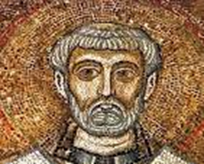 The First Epistle of Clement of Rome[2] is a letter addressed to the Christians in the city of Corinth. It includes an admonition to Take up the epistle of the blessed Paul the Apostle (xlvii. 1) which was written to this Corinthian audience; a reference which seems to imply written documents available at both Rome and Corinth. Clement also alludes to the first epistle of Paul to the Corinthians; and alludes to Paul’s letters to the Romans, Galatians, Ephesians, and Philippians, Titus, 1 Timothy, numerous phrases from the Epistle to the Hebrews, and possible material from Acts.[3]
The First Epistle of Clement of Rome[2] is a letter addressed to the Christians in the city of Corinth. It includes an admonition to Take up the epistle of the blessed Paul the Apostle (xlvii. 1) which was written to this Corinthian audience; a reference which seems to imply written documents available at both Rome and Corinth. Clement also alludes to the first epistle of Paul to the Corinthians; and alludes to Paul’s letters to the Romans, Galatians, Ephesians, and Philippians, Titus, 1 Timothy, numerous phrases from the Epistle to the Hebrews, and possible material from Acts.[3]
Clement died in the year AD 99. Based on internal evidence some scholars say the letter was composed some time before AD 70.[4]
Ignatius of Antioch. Eusebius states that he died in AD 108. It is quite possible that he would have known some of the people who saw the risen Christ. He was a 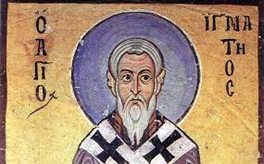 disciple of John. Ignatius wrote this letter while being taken to Rome for execution.
disciple of John. Ignatius wrote this letter while being taken to Rome for execution.
In his letter to the church at Ephesus, he makes the following statement: Ye are initiated into the mysteries of the Gospel with Paul, the holy, the martyred, the deservedly most happy, at whose feet may I be found, when I shall attain to God; who in all his Epistles makes mention of you in Christ Jesus.[5] He demonstrates that he knows some of Paul’s letters and may well have copies of them.
The other books of the New Testament
The gospels of Mark, Matthew and Luke were completed before AD 70, because each recorded the prophesy of Jesus who said that the temple would be destroyed to such an extent that there would not be one stone standing on another. This happened in AD 70. If these books were written after this event, they certainly would have recorded the fulfillment of Jesus’ prophecy. Peter and Paul were executed in Rome at around AD 65.[6] John wrote towards the end of the first century, but maybe much earlier.
So, by the end of the first century, AD 99, the New Testament was complete. The writings were being circulated and copied and being read in churches.
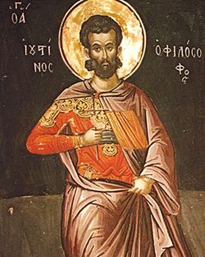 In Justin Martyr’s first Apology written in AD 155-157 and addressed to the Roman Emperor Antoninus Pius and his son, he includes one crucial statement (66:3).
In Justin Martyr’s first Apology written in AD 155-157 and addressed to the Roman Emperor Antoninus Pius and his son, he includes one crucial statement (66:3).
For the apostles, in the memoirs composed by them, which are called Gospels, have thus delivered unto us what was enjoined upon them; that Jesus took bread, and when He had given thanks, said, “This do in remembrance of Me,” [Luke 22:19] this is My body; and that, after the same manner, having taken the cup and given thanks, He said, “This is My blood;” and gave it to them alone.[7]
By the end of the second century (AD 199), as evidenced by the writings of Justin Martyr, Clement of Alexandria, Tertullian and others, Christians regarded the writings of the apostles, including Paul, the four gospels and the book of Acts, as divine scripture.
A cannon of scripture
The first specific proposal for a new canon for the Christian movement was made in the mid-second century by Marcion of Sinope approx. AD 85-160, the owner of a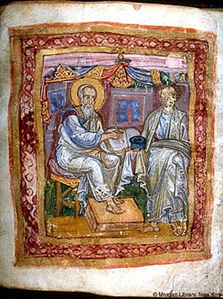 successful shipping business and the son of the bishop of the church in Asia Minor. Marcion proposed that the church reject the Jewish scriptures and embrace a new canon of its own. That canon was to be composed of only one gospel, Luke, and the letters of apostle Paul.
successful shipping business and the son of the bishop of the church in Asia Minor. Marcion proposed that the church reject the Jewish scriptures and embrace a new canon of its own. That canon was to be composed of only one gospel, Luke, and the letters of apostle Paul.
Although Marcion’s ideas were heretical and consequently rejected by the church and he was expelled from it, it did stimulate the church to compose its own canon and which of its own writings should be regarded as canonical; and why.
The image is an 11th century painting depicting the apostle John (left) and Marcion (right).
Irenaeus, bishop of Lyons in Gaul, present day France. His works written in 185 quotes extensively from 22 books as being authoritative. These are the four gospels, Acts, Paul’s letters, 1 John and 1 Peter, revelation and the apocryphal Shepherd of Hermas.[8]
Eusebius bishop of Caesarea quotes Origen of Alexander (185-254) who gave the order of the gospels as Matthew, Mark, Luke and John and agrees with Irenaeus’ assignments of which books are canonical.[9]
So as early as 185, most of the New Testament was compiled.
Persecution of Christians
The reproduction and circulation of the scriptures was hampered severely by the persecution which Christians had to endure. Below is simply only one example which is Roman historian Tacitus’ Comments on Nero’s Treatment of Christians:[10]
Nero fastened the guilt and inflicted the most exquisite tortures on a class hated for their abominations, called Christians by the populace. Christus, from whom the name had its origin, suffered the extreme penalty during the reign of Tiberius at the hands of one of our procurators, Pontius Pilatus, and a most mischievous superstition, thus checked for the moment, again broke out not only in Judæa, the first source of the evil, but even in Rome, where all things hideous and shameful from every part of the world find their center and become popular. Accordingly, an arrest was first made of all who pleaded guilty; then, upon their information, an immense multitude was convicted, not so much of the crime of firing the city, as of hatred against mankind. Mockery of every sort was added to their deaths. Covered with the skins of beasts, they were torn by dogs and perished, or were nailed to crosses, or were doomed to the flames and burnt, to serve as a nightly illumination, when daylight had expired.
Rome became Christian
 Up until the time of Constantine (272-337), Christians were persecuted as stated, but this changed with the Edict of Milan, a proclamation that permanently established religious toleration for Christianity within the Roman Empire. It was the outcome of a political agreement concluded between the Roman emperors Constantine and Licinius in February 313. The reason why Constantine was instrumental in this change is told by Lactantius and recorded by the first Christian historian, Eusebius (260-339). On 27 October 312, the night before the critical battle of Milvian Bridge, Constantine had a dream, which he saw the first two letters; the chi and the rho of Christ’s name in Greek superimposed and heard the words, in hoc signo vinces; by which you will conquer. The next morning, he ordered his men to paint this symbol, [shown], on their shields and his helmet.” They then marched into war, accordingly, as “Christian soldiers.” to victory.
Up until the time of Constantine (272-337), Christians were persecuted as stated, but this changed with the Edict of Milan, a proclamation that permanently established religious toleration for Christianity within the Roman Empire. It was the outcome of a political agreement concluded between the Roman emperors Constantine and Licinius in February 313. The reason why Constantine was instrumental in this change is told by Lactantius and recorded by the first Christian historian, Eusebius (260-339). On 27 October 312, the night before the critical battle of Milvian Bridge, Constantine had a dream, which he saw the first two letters; the chi and the rho of Christ’s name in Greek superimposed and heard the words, in hoc signo vinces; by which you will conquer. The next morning, he ordered his men to paint this symbol, [shown], on their shields and his helmet.” They then marched into war, accordingly, as “Christian soldiers.” to victory.
Constantine also supported the Church through patronage and by calling for councils to standardize Christian doctrine.
The Council of Nicaea
The Council of Nicaea, held in AD 325, was the first ecumenical council of the Christian church, convened by Emperor Constantine. Its primary purpose was to address the Arian controversy, a theological dispute about the nature of Jesus Christ. The council condemned Arianism, which posited that Jesus was not divine, and affirmed the Nicene Creed, which declared, Jesus to be God from God, Light from Light, true God from true God, begotten, not of one Being with the Father.
Athanasius’s Easter Letter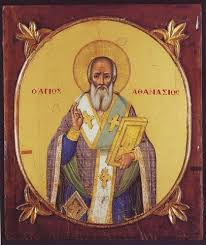
The Council of Nicaea discussed the composition of the New Testament, but the first listing of the New Testament canon in its final form was in Bishop Athanasius’s Easter Letter (AD 367) which he wrote to protect his flock from heretical writings. He gives the present 27 New Testament books, being God-inspired Scripture, which the original eyewitnesses and ministers of the word have delivered unto our fathers and which have been handed down and confirmed as divine. He also mentions the Shepherd of Hermas and the Didache as being useful to read, as well as the Old Testament apocryphal books, but stressed that these texts do not carry divine authority.
Inspired books
A key part of deciding which books were inspired was whether the texts had been written by an apostle or someone very closely associated with an apostle. Matthew, John, Paul and Peter were apostles. Mark wrote Peter’s words to form his gospel, and Luke was a travelling companion of Paul. James and Jude were brothers of Jesus and even though the author of Hebrews is unknown its contents are fully consistent with the apostles’ teaching.
The Apocryphal books
These books were deemed as not being inspired and as Athanasius stated, they are useful to read but they are not inspired. The apocryphal books of 1 Esdras, 2 Esdras, Tobit, Judith, The Rest of Ester, The Wisdom of Solomon, Ecclesiasticus (also known as Sirach), Baruch with the Epistle Jeremiah, The Songs of the 3 Holy Children, The History of Susana, Bel and the Dragon, The Prayer of Manasseh, 1 Maccabees, and 2 Maccabees were included under a separate section called the Apocrypha in 1611 King James Bible. They were removed in 1885. This appears to be the first use of the word apocrypha. They are included as part of the Roman Catholic Bible where they are called Deuterocanonical and comprise Tobit, Judith, 1 Maccabees, 2 Maccabees, Wisdom, Sirach, and Baruch, plus additions to Esther and Daniel. The Eastern Orthodox Church, Oriental Orthodox, and the Assyrian Church of the East, include the following books: Tobit, Judith, Baruch, Ecclesiasticus, Wisdom, First and Second Maccabees, as with the Roman Catholic Bible, they are not called Apocrypha, but rather Deuterocanonical.
The Apocrypha is not inerrant; it is not inspired and therefore it is not scripture.
Early Bibles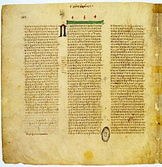
The New Testament books included in Codex Vaticanus (shown), which is believed to have been written early in the fourth century, are: Matthew, Mark, Luke, John, Acts, Romans, 1 & 2 Corinthians, Galatians, Ephesians, Philippians, 1 & 2 Thessalonians, Hebrews, James, 1 & 2 Peter, 1, 2, & 3 John, and Jude. It is missing 1 & 2 Timothy, Titus, Philemon, and Revelation.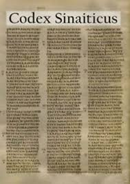
The New Testament books contained in Codex Sinaiticus (shown)[11], which is believed to have been written in the mid fourth century, are the same as those found in modern Bibles, but with a different order of books. Additionally, it contains two apocryphal books: The Epistle of Barnabas and the Shepherd of Hermas.
Summary
The letters of Paul and the gospel of Luke and Acts were considered inspired even as the Bible was being written. By the end of the first century, AD 99, the New Testament was complete. The writings were being copied and circulated and being read in churches. By the end of the second century (AD 199), as evidenced by the writings of Justin Martyr, Clement of Alexandria, Tertullian and others, Christians regarded the writings of the apostles, including Paul, the four gospels and the book of Acts, as divine scripture. it was not until AD 367 that the Bishop of Alexandria, Athanasius, compiled the first canon of scripture. He did this in his Easter Letter to protect his flock from the heretical writings circulating at the time. This contained the 27 books of the New Testament. His compilation was confirmed by the councils at Hippo in 393 and at Carthage in 397, and thus the 27 books of the New Testament were settled and from then on used in all Christian denominations.
[1] Gary Bates and Lita Cosner, How did we get our Bible? And is it the Word of God? Creation Book Publishers, 2013, page 22.
[2] Clement of Rome is believed to have lived from approximately AD 35 to either AD 99 or 101. He is referred to as Clement of Rome to distinguish him from Clement of Alexander.
[4] Ibid.
[5] Letter to the Ephesians 12:2; https://www.earlychristianwritings.com/text/ignatius-ephesians-longer.html.
[6] See my article: https://www.adefenceofthebible.com/2025/04/16/is-the-apostle-peter-really-buried-underneath-the-altar-in-the-vatican.
[7] https://www.newadvent.org/fathers/0126.htm.
[8] Roy W Hoover, How the Books of the New Testament Were Chosen, Biblical Archaeology Society Library, https://library.biblicalarchaeology.org/article/how-the-books-of-the-new-testament-were-chosen, citing Bruce M Metzger, The Canon of the New Testament, New York, Oxford University Press, 1987, pages 153-156.
[9] Eusebius, The Church History, Book 6, 25.
[10] Complete Works of Tacitus. Tacitus, A J Church, W J Brodribb, S Bryant; Edited for Perseus. (New York: Random House, 1942). Reproduced online from Perseus Tufts.
[11] For the fascinating story of how it was discovered see: https://www.adefenceofthebible.com/2017/03/14/tischendorfs-great-manuscript-find.

